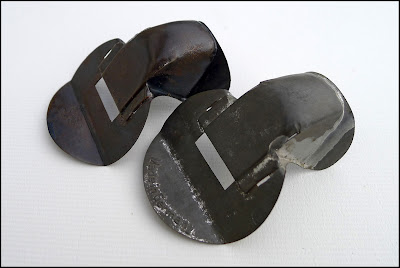What makes a nose flute playing beautiful ? Probably the same criteria usually applied to whistling or maybe singing.
The most important one is probably the interpretation itself, i.e. the way a player appropriates the music he plays, incarnates it, in a coherent manner adapted to reveal its character and beauty. This is a matter of pure art, and we won't deal with it here and now.
The second important point is the beauty of the voice/sound itself, its purity and texture. In the case of the nose flute, this mostly depends on the instrument itself. But also on the voice ambitus (the range of accessible notes) and the breath length, which are really important in nosefluting.
Master Mosurin seems to have infinitely deep lungs...
Another point we won't discuss here is the perfect pitch. This is as a matter of "ear" as a question of being accustomed to a specific nose flute, and being able to provide a real time perfect mouth/tongue move.
Finally, the ornaments. There are many kinds of ornaments in music playing, but the most adapted to nosefluting are the vibratos, tremolos and trills, which are often confused all together.
A
Tremolo/tremolando (meaning
tremble/trembling in italian) is an ornament in which the intensity (
amplitude) of the note periodically varies around an average value.
A
Vibrato (meaning
vibrate in italian) is an ornament in which the sharpness (
tonality) of the note periodically varies around an average value.
A
Trill is an ornament in which the note rapidly alternates between to adjacent notes.
The classic and common plastic Humanatone provides a little airhole besides the mouth hole, that many people say themselves to be curious about. In the Humanatone patent (
see here), Ernest Davis called it a "true tremolo" hole.
In fact, using this feature by alternatively closing and releasing the little hole, provides a kind of mix of a vibrato and a trill. Indeed, it is not a "true vibrato" since it provides an alternation between 2 notes (and not a variation "around" a note), and it is not neither a "true trill" since the gap between the 2 notes produced depends on the pitch of the original note : the gap is much bigger if the note is sharp (up to one tone), and almost not audible with a bass note. So, the gap is not controlled, and corresponds even less to a specific scale. Using this feature certainly provides a "trembling effect" though.
Now, what are the ways of producing tremolos, vibratos and trills with a nose flute ? There are 4 available means, more or less difficult to achieve :
- Breath control
- Moving the flute
- Moving the mouth
- Moving the tongue
Breath control is not easy. Being able to blow rapidly and alternatively strongly and weakly is difficult and needs a lot of practice.
The Nosy Diva Miss Birdy Kuck is able to, as she masters the other following techniques... (so jealous I am!) Just check
her crazy Valkyrie cover, or
her Queen of the Night ... Well, breath control provides a "true tremolo".
Contrarywise, it's rather easy to alternatively blow-and-stop (air/no-air), thus provoking a hashed and discontinuous note.
Moving the flute is much easier. It needs some practice in order to get a rather smooth and regular action. It consists in pressing and releasing quickly and alternatively on the base of the flute. This technique provides a "true vibrato".
You can check a well performed sample of that finger technique
in this video.
Moving the mouth : with this technique, the player alternatively pulls forward and backward his chin, pushing by that way the base of flute, and provoking the same effect than with "moving the flute", but by another physical mean.
Moving the tongue : the tongue can be moved according to several actions. Back and forth, or left-right-left... or up-down-up... applying different types of trembling effects. The 2 last moves (L/R and U/D) are really easy to perform widely, and provide a kind of "bird call" vibrato, with a huge gap between the bass and sharp notes. It's more difficult to avoid this large range, and to master a tiny and subtle vibrato.
Well, there is a subsidiary way, which is to alternately block and release the mouth hole with a finger, partly or entirely, but it provides no tremolo or vibrato, but a discontinuous note (pretty efficient for Morse code ?).
Trills ? They are produced with a typical tongue move (some kind of inflating it...) coupled with a soft breath control ... Impossible for me to describe precisely, since I do not master this technique. We need the Nosy Diva to reveal her secrets...



























